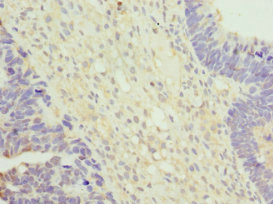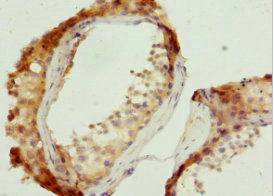Full Product Name
Rabbit anti-Homo sapiens (Human) VPS35 Polyclonal antibody
Alternative Names
DKFZp434E1211 antibody; DKFZp434P1672 antibody; FLJ10752 antibody; FLJ13588 antibody; FLJ20388 antibody; hVPS35 antibody; Maternal embryonic 3 antibody; Maternal-embryonic 3 antibody; MEM 3 antibody; MEM3 antibody; PARK17 antibody; TCCCTA00141 antibody; Vacuolar protein sorting 35 (yeast) antibody; Vacuolar protein sorting 35 antibody; Vacuolar protein sorting 35 homolog antibody; Vacuolar protein sorting associated protein 35 antibody; Vacuolar protein sorting-associated protein 35 antibody; Vesicle protein sorting 35 antibody; VPS 35 antibody; VPS35 antibody; VPS35_HUMAN antibody
Immunogen
Recombinant Human Vacuolar protein sorting-associated protein 35 protein (1-250AA)
Immunogen Species
Homo sapiens (Human)
Purification Method
Antigen Affinity Purified
Concentration
It differs from different batches. Please contact us to confirm it.
Buffer
PBS with 0.02% sodium azide, 50% glycerol, pH7.3.
Tested Applications
ELISA, IHC
Recommended Dilution
| Application |
Recommended Dilution |
| IHC |
1:20-1:200 |
Storage
Upon receipt, store at -20°C or -80°C. Avoid repeated freeze.
Lead Time
Basically, we can dispatch the products out in 1-3 working days after receiving your orders. Delivery time maybe differs from different purchasing way or location, please kindly consult your local distributors for specific delivery time.
Usage
For Research Use Only. Not for use in diagnostic or therapeutic procedures.







